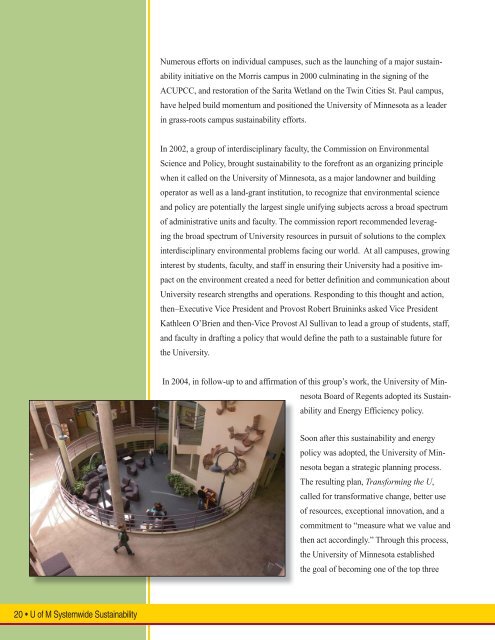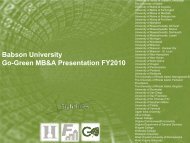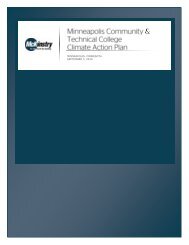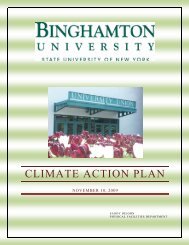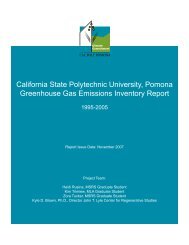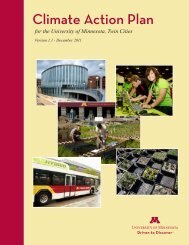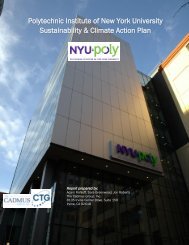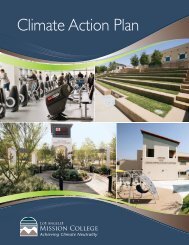Climate Action Plan - ACUPCC Reports - Climate Commitment
Climate Action Plan - ACUPCC Reports - Climate Commitment
Climate Action Plan - ACUPCC Reports - Climate Commitment
Create successful ePaper yourself
Turn your PDF publications into a flip-book with our unique Google optimized e-Paper software.
Numerous efforts on individual campuses, such as the launching of a major sustainabilityinitiative on the Morris campus in 2000 culminating in the signing of the<strong>ACUPCC</strong>, and restoration of the Sarita Wetland on the Twin Cities St. Paul campus,have helped build momentum and positioned the University of Minnesota as a leaderin grass-roots campus sustainability efforts.In 2002, a group of interdisciplinary faculty, the Commission on EnvironmentalScience and Policy, brought sustainability to the forefront as an organizing principlewhen it called on the University of Minnesota, as a major landowner and buildingoperator as well as a land-grant institution, to recognize that environmental scienceand policy are potentially the largest single unifying subjects across a broad spectrumof administrative units and faculty. The commission report recommended leveragingthe broad spectrum of University resources in pursuit of solutions to the complexinterdisciplinary environmental problems facing our world. At all campuses, growinginterest by students, faculty, and staff in ensuring their University had a positive impacton the environment created a need for better definition and communication aboutUniversity research strengths and operations. Responding to this thought and action,then–Executive Vice President and Provost Robert Bruininks asked Vice PresidentKathleen O’Brien and then-Vice Provost Al Sullivan to lead a group of students, staff,and faculty in drafting a policy that would define the path to a sustainable future forthe University.In 2004, in follow-up to and affirmation of this group’s work, the University of MinnesotaBoard of Regents adopted its Sustainabilityand Energy Efficiency policy.Soon after this sustainability and energypolicy was adopted, the University of Minnesotabegan a strategic planning process.The resulting plan, Transforming the U,called for transformative change, better useof resources, exceptional innovation, and acommitment to “measure what we value andthen act accordingly.” Through this process,the University of Minnesota establishedthe goal of becoming one of the top three20 • U of M Systemwide Sustainability


